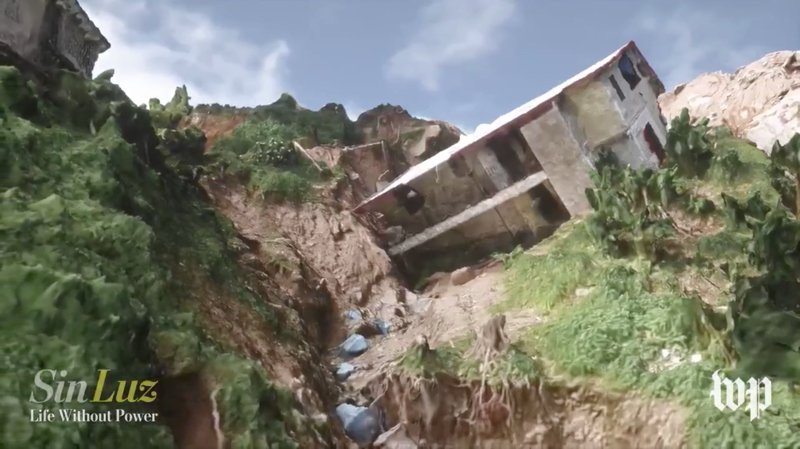Journalists are always on the lookout for better ways to tell stories, and this has made them among the scrappiest and most creative users of new technologies. Need proof? Take a look at how the New York Times pushed an innovative kind of interactive, web-based journalism in 2012. “Snow Fall,” the paper’s crowning achievement that year, used relatively new tools to incorporate videos, animated illustrations, and more to bring its readers deeper inside a harrowing piece about a fatal avalanche in the Cascades.
Though interactive features like this have become more commonplace in recent years, journalists have not stopped innovating with their storytelling.
Recently, the Washington Post published “Sin Luz,” an interactive account of life in Puerto Rico following the landfall of two separate hurricanes this past September. For a journalist, conveying this type of damage is an especially difficult task, especially when the viewing public is accustomed to seeing images of hurricane devastation. So how to bring it home? Photogrammetry.
Alongside the usual photographs, videos, animations, and maps, the piece includes a photogrammetric reconstruction of an nhabitated mountainside that now looks more like a pile of rubble.
In 2017, the continuous drop in the price of capture technologies has made drones and photogrammetry software accessible to everyone, including journalists. As a result, they’ve learned a lesson that the commercial 3D industry learned a long time ago: 3D models helps put remote viewers inside a space or on location. Looking at a 3D models helps us feel like we’re present. It tells a story, and in the case of “Sin Luz,” it has definitely done just that.
The Post used a process called photogrammetry to create 3-D models from drone footage of the devastation that remains across the island. https://t.co/bnSC0DoYra pic.twitter.com/CNgZ3Ruh9i
— Washington Post (@washingtonpost) December 15, 2017






